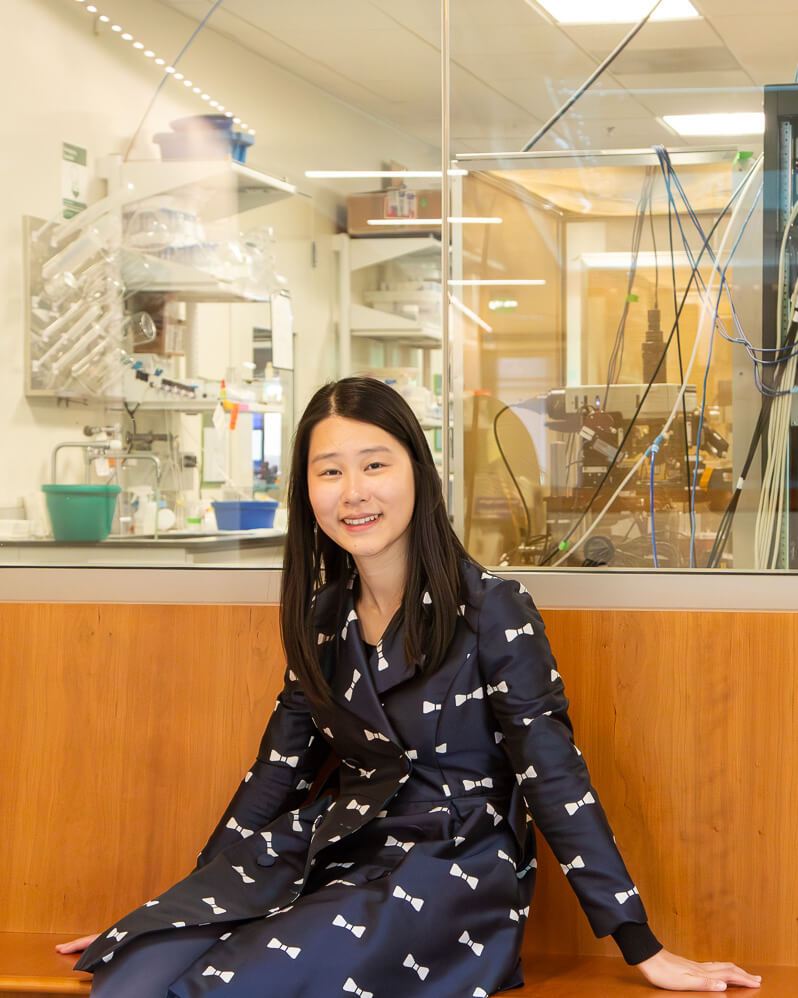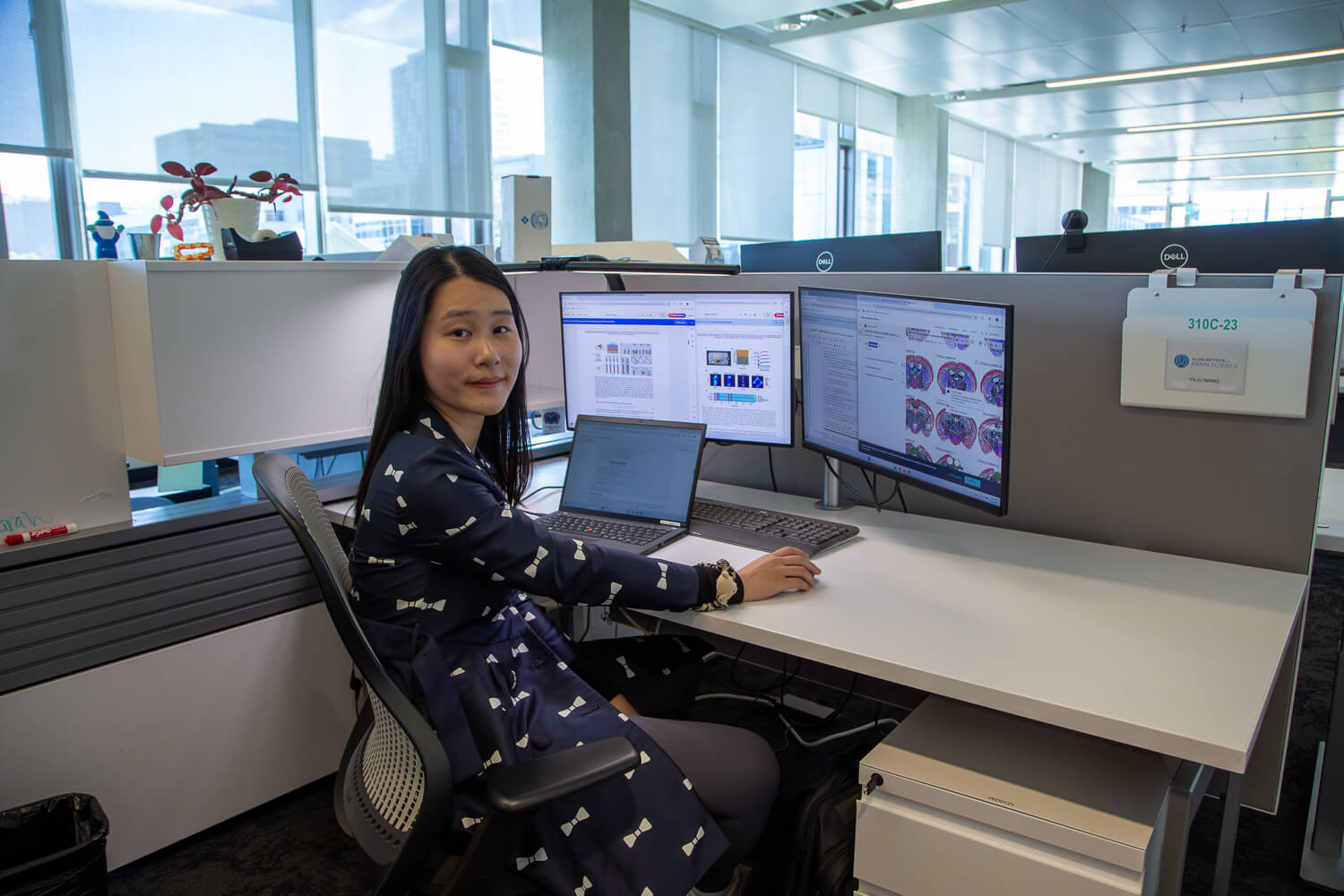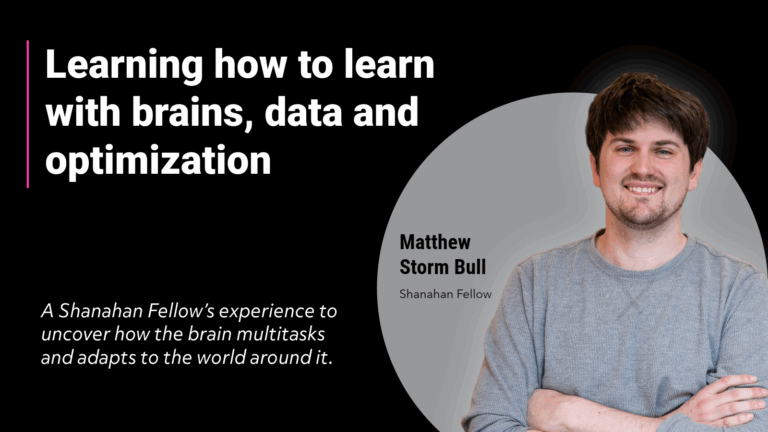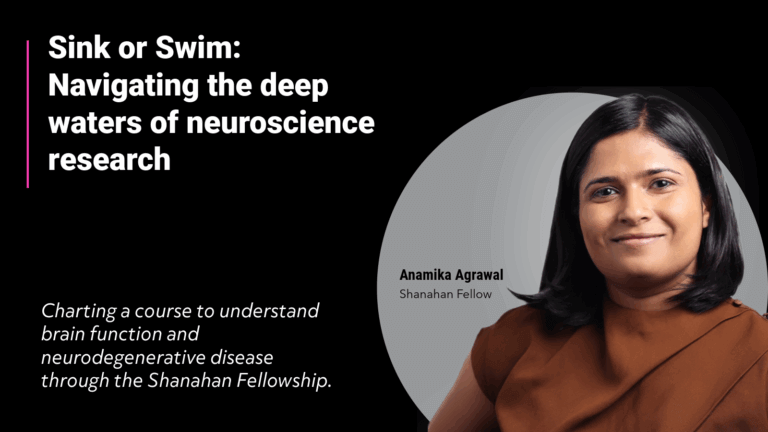Making connections

Liz Dueweke / Allen Institute
October 29, 2025
Neurons don’t work alone. They cluster into cell types, forming intricate networks where collaboration, not isolation, allows us to think, feel, and live. It’s a principle that Yiliu Wang, Ph.D., appreciates not only in her research, but in the very structure of her Shanahan Fellowship experience at the Allen Institute.
When Wang began work as a Shanahan Fellow, her background in theory, data, and artificial intelligence seemed worlds away from hands-on neuroscience; however, she quickly realized they are deeply connected. At the Allen Institute, she found something equally important: a collaborative culture that mirrors the neural networks she studies.
Diving into how neurons work
“During my Ph.D., I focused on relational learning, like learning in contexts where we have a set of items connected by relationships,” Wang explains. “Neuroscience provides an ideal testing ground for such methods and is also a rich source of inspiration for advancing them. After all, neurons work in groups to support cognitive functions.”
This perspective led to five major research projects, each tackling a different dimension of how neurons organize and interact. The first two explored how different cell types arrange and connect across the brain.
Working with associate investigator Uygar Sümbül, Ph.D., and meritorious investigator Christof Koch, Ph.D., Wang tested a theory that different cell types are evenly spread across the brain’s outer layer, accounting for its curved, folded shape. By developing advanced methods to map the exact locations of genetically-tagged brain cells in mouse brains, they found evidence supporting this theory. Then, with Shanahan Fellowship research associate Yuhong Li and assistant investigator Mariano Gabitto, Ph.D., Wang investigated how cell patterns change in Alzheimer’s disease, revealing how the disease disrupts the brain’s carefully organized structure.

“This fellowship serves as a proving ground for the next generation of fearless and interdisciplinary scientists and opens the doors for people from diverse backgrounds to join the world of neuroscience.”
Three other projects examined how neurons fire and interact differently as the brain transitions between states, like being awake or asleep, a process that reveals the brain’s remarkable flexibility.
Working with Shanahan Fellow and collaborator Timothy Kim, PhD., Sümbül and UW professor Eric Shea-Brown, Ph.D., the team proposed a new mathematical approach to study complex patterns in brain activity over time, to decode the hidden rhythms of neural activity.
Wang then worked to understand how psychedelics change patterns of activity in multiple brain regions and cell types, tackling how they fundamentally alter how the brain works.
A massive scale of discovery
The transition from theoretical work to hands-on neuroscience data analysis brought unexpected challenges. “The scale of the dataset really surprised me,” Wang admits.
That’s also why the Institute’s collaborative culture proved invaluable for Wang. Mentors and colleagues helped navigate massive amounts of data and vast landscape of possibilities, identifying important directions and projects. “People are always willing to help and explain concepts clearly, even if they are not directly involved in my project,” Wang said.
Above all, Wang says she has grown as a scientist. Unlike Ph.D. working closely with an advisor and pen-and-paper calculations, the Shanahan Fellowship required Wang to move into her next step of her career, starting up multiple projects with different scientists and massive data mining. She supervised a research associate in her second year, which she says helped her become a better leader, gaining confidence in project management.
Her advice for future fellowship applicants? Take the chance and go for it. “Don’t worry if you come from a primarily theoretical background,” she said. “This is a great opportunity to broaden the horizons of your current field of study. Here, we apply mathematics to tackle challenging problems and then bring those insights back into fundamental science.”
Her inspiring work is a testament to what happens when we work the way neurons do: together.
“This experience has shaped me into an independent and collaborative researcher with a broader perspective on the research landscape,” said Wang. “This fellowship serves as a proving ground for the next generation of fearless and interdisciplinary scientists and opens the doors for people from diverse backgrounds to join the world of neuroscience.”




